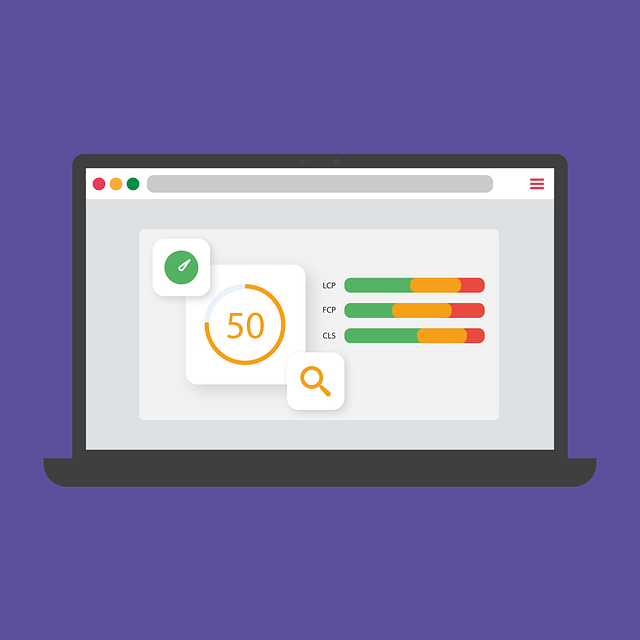Core Web Vitals Optimization (CWO) is a strategic approach to enhance user experience and SEO rankings by focusing on key metrics like Largest Contentful Paint (LCP), First Input Delay (FID), and Cumulative Layout Shift (CLS). Identifying slow loading pages using tools like Google PageSpeed Insights, GTmetrix, and Pingdom is crucial. Best practices include minimizing HTTP requests, leveraging browser caching, implementing a Content Delivery Network (CDN), and regular monitoring. By adhering to these strategies, CWO improves page load times, boosts engagement, and drives higher mobile traffic, ultimately leading to better search engine rankings.
In today’s digital era, website speed is a critical factor influencing user experience and search engine optimization (SEO). With just a few clicks, visitors expect instant gratification. This article delves into the art of Core Web Vitals Optimization, exploring essential techniques to enhance site speed. We’ll guide you through understanding the impact of Core Web Vitals, identifying slow pages, optimizing load times, and leveraging powerful tools like CDNs and browser caching. By implementing these practices, you can significantly improve your site’s performance and user engagement.
Understanding Core Web Vitals and Their Impact on SEO

Core Web Vitals are a set of metrics that measure user experience on a webpage, focusing on load time, interactivity, and visual stability. These vitals include Largest Contentful Paint (LCP), First Input Delay (FID), and Cumulative Layout Shift (CLS). Each plays a crucial role in the overall health of a site: LCP measures how quickly visible content appears, FID captures the latency of a page’s interactivity, and CLS assesses any sudden layout changes that might disrupt users.
Optimizing these Core Web Vitals is essential for SEO because search engines, like Google, prioritize sites with fast load times and excellent user experiences. A well-optimized site not only ranks higher but also enjoys lower bounce rates and increased engagement, reflecting positively on its SEO performance.
Identifying Slow Loading Pages: Tools and Techniques

Identifying slow loading pages is a critical step in SEO site speed optimization. Using advanced tools like Google PageSpeed Insights, GTmetrix, and Pingdom can provide detailed insights into page performance, highlighting areas for improvement. These tools offer comprehensive analyses, including Core Web Vitals, which measure key user experiences such as load time, interactivity, and visual stability. By evaluating these metrics, website owners can pinpoint specific issues like slow HTML parsing, excessive JavaScript execution, or large image files that hinder page speed.
Techniques for identifying sluggish pages include conducting manual speed tests across various devices and network conditions, utilizing browser developer tools to profile resource loading, and examining server logs for performance bottlenecks. Regular monitoring and analysis ensure that any improvements made are sustained over time. Core Web Vitals Optimization is not just about checking boxes; it involves a deep understanding of page elements and their impact on user experience, driving better search rankings and higher conversion rates.
Optimizing Page Load Times: Best Practices

Optimizing page load times is a critical aspect of SEO site speed optimization, focusing on reducing the time it takes for web pages to fully load and display content. Core Web Vitals (CWV) play a significant role in this process, as they measure user experience and visual stability, ensuring that your website provides a seamless browsing experience. Best practices include minimizing HTTP requests by combining and optimizing images, CSS, and JavaScript files. Additionally, leveraging browser caching can significantly reduce load times by storing static resources locally on the user’s device, enabling faster retrieval during subsequent visits.
Implementing a Content Delivery Network (CDN) is another effective strategy to improve page speed. CDNs distribute content across multiple servers globally, ensuring users access content from the nearest server, thereby reducing latency. Additionally, regular use of tools like Google PageSpeed Insights and GTmetrix can help identify performance bottlenecks by providing detailed reports on load times, CWV metrics, and suggestions for improvements. By following these best practices, you can enhance your website’s speed, boost user engagement, and improve search engine rankings through Core Web Vitals Optimization.
The Role of Mobile-Friendliness in Speed Optimization

In today’s digital era, where users increasingly access websites via mobile devices, mobile-friendliness is no longer an option but a necessity for effective SEO site speed optimization. Core Web Vitals Optimization, a set of metrics focusing on page load time, interactivity, and visual stability, plays a pivotal role in enhancing user experience on mobile platforms. Ensuring your website is optimized for faster loading times on smartphones and tablets can significantly improve your search engine rankings and drive higher engagement rates among mobile users.
A mobile-friendly site not only meets the expectations of modern consumers but also allows search engines to crawl and index content more efficiently. This, in turn, results in better visibility and increased organic traffic. By implementing responsive design strategies, compressing media assets, leveraging browser caching, and optimizing code for smaller screens, you can substantially contribute to both Core Web Vitals Optimization and the overall performance of your mobile website.
Leveraging Browser Caching for Improved Performance

Leveraging browser caching is a powerful strategy within core web vitals optimization aimed at enhancing site speed and user experience. By enabling caching, frequently requested resources like images, scripts, and stylesheets are stored locally on users’ devices for subsequent visits. This significantly reduces load times as the browser can quickly retrieve these assets from the cache instead of making new network requests. As a result, pages load faster, contributing to better core web vitals metrics such as Largest Contentful Paint (LCP) and First Input Delay (FID).
Implementing effective caching strategies involves setting appropriate cache-control headers on your server to instruct browsers how long to store resources in their caches. This ensures that users receive up-to-date content while also benefiting from the performance gains of cached assets. By optimizing these elements, websites can achieve faster loading times, enhance user engagement, and ultimately improve search engine rankings through better core web vitals signals.
Content Delivery Networks (CDNs): Enhancing Site Speed

Content Delivery Networks (CDNs) are a powerful tool in your SEO arsenal for site speed optimization, especially when it comes to Core Web Vitals. By distributing your website’s content across multiple servers located strategically around the globe, CDNs significantly reduce latency and improve load times. This is crucial, as Google has explicitly stated that page speed is a factor in its search rankings, with faster sites enjoying higher positions.
When a user requests your site, a CDN delivers the requested assets from the nearest server, ensuring quick loading times regardless of their geographical location. This not only enhances the user experience by reducing wait times but also boosts key metrics like bounce rates and click-throughs, which can positively impact your search engine rankings through Core Web Vitals Optimization.
Minimizing HTTP Requests: Simplifying Your Code

Minimizing HTTP requests is a key aspect of SEO site speed optimization, directly tied to Core Web Vitals, which search engines use to gauge user experience. Each time your website makes an HTTP request, it adds a slight delay. By simplifying your code and reducing these requests, you can significantly enhance page load times. This strategy not only benefits SEO but also ensures your website delivers content more efficiently, leading to improved user engagement and satisfaction.
Refactoring your code to consolidate resources, use content delivery networks (CDNs), and optimize images and scripts can drastically cut down on HTTP requests. These techniques ensure that your web pages load faster, making them more appealing to both search engines and visitors. As a result, you’ll likely see improvements in bounce rates, time on page, and overall site traffic, all of which are crucial factors in achieving top rankings in search engine results.
Regular Audits and Monitoring: Staying Ahead of the Curve

Regular audits and monitoring are vital components in maintaining optimal SEO site speed. By conducting frequent core web vitals optimization checks, website owners can stay ahead of performance dips that may negatively impact user experience and search rankings. These audits allow for the early identification of issues such as high loading times, layout shifts, or interactivity problems, enabling swift corrective actions.
Monitoring tools play a crucial role in tracking these metrics over time. Website operators can set up alerts to notify them of sudden changes in performance, ensuring they address any emerging issues promptly. Regular reviews also help in identifying patterns and trends that could indicate broader problems within the site’s infrastructure or content strategy.
